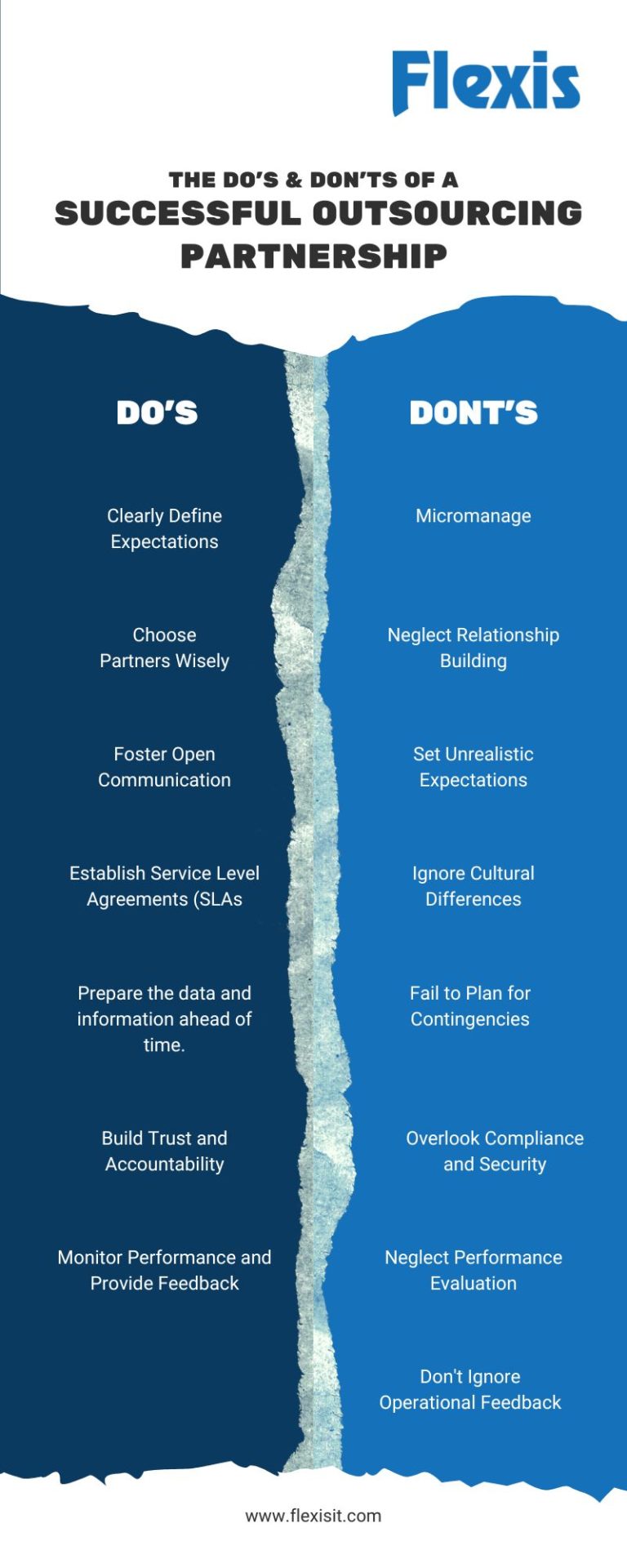
The Do’s & Don’ts Of A Successful Outsourcing Partnership
Outsourcing partnerships can be a game-changer for your Managed Service Provider (MSP) business, enabling you to scale your operations, access specialized expertise, and provide enhanced services to your clients. Whether it’s NOC, SOC and/or Helpdesk, outsourcing can allow your internal team to focus on high-margin, strategic activities while handing off tasks such as monitoring, maintenance, alert triage and remediation to a trusted partner. However, building and maintaining successful outsourcing partnerships requires careful planning, communication, and collaboration. This should include not only what is going to be in scope but who is responsible for each deliverable and a timeline for getting the work done.
The Do's
1. Clearly Define Expectations:
Expectation setting is arguably the single most important aspect of a successful partnership. Pay attention to SOWs and SLAs so you understand what the scope is and what type of response you should expect. This will allow you to have clear expectations on roles and responsibilities from the outset of the partnership. Define key performance indicators (KPIs) and metrics to measure success and track progress. This requires a thorough understanding of the scope, the timing and the resources involved from both teams.
2. Choose Partners Wisely:
Select outsourcing partners with complementary skills, expertise, and values. Ensure partners have certifications and sufficient real-world experience to deliver the services you need. Conduct thorough due diligence to assess the partner’s reputation, track record, and reliability.
3. Foster Open Communication
Maintain regular and transparent communication channels with outsourcing partners. Frequent meetings especially in the early stages of the engagement are important to ensure everyone is on the same page and to catch any issues or confusion early so both parties can work through challenges, identify gaps in information, accesses and deliverables. This will help keep the relationship on track. Failure to adequately communicate can result in situations where you end up saying, “I thought you did that, what is your scope, why won’t you do XYZ?”
4. Understand Service Level Agreements (SLAs):
Outsourcing services should include clear expectations on response time SLAs that will be based on the criticality of the issue based on ITIL process. By understanding the expected response, you can set appropriate expectations with your customers. SLAs can outline the scope of services, response times, and quality standards. Understand whether SLAs are realistic, achievable, and mutually beneficial for both parties.
5. Provide Training and Support:
Each MSP has a unique culture and model. You should offer resources and regular communication to help outsourcing partners understand your business, processes, and client expectations. Provide ongoing
support and guidance to ensure partners are equipped to deliver high-quality services that can be adapted to the outsource environment.
6. Build Trust and Accountability:
It is crucial that you treat your outsourced partner with the same level of respect and collaboration that you do your internal team. This will allow you to cultivate trust and accountability through transparent and ethical business practices. Hold both parties accountable for meeting commitments and delivering results.
7. Monitor Performance and Provide Feedback:
Regularly assess outsourcing partner performance against agreed-upon metrics and KPIs. This is especially important in the early days of the relationship with both parties are learning how to work together and to ensure that everything is on track and working smoothly. You should provide constructive feedback and identify areas for improvement to drive continuous growth and optimization.
The Don'ts:
1. Micromanage:
Avoid micromanaging outsourcing partners and allow them the autonomy to execute tasks according to agreed-upon guidelines. Focus on outcomes and results rather than dictating every detail of the process. In most cases, the partner will be working from a documented SOW and so their responsibilities are already defined.
2. Don't Ignore Operational Feedback
In many instances, the outsource partner has ways to deliver the services and service interactions that will allow you to optimize your service delivery. By taking advantage of these aggregated best practices, you can deliver a better service to your customers. Working with new partners often means adapting to an SOP that may be different than your own. Being receptive and accommodating to operational changes and workflows with known good practices will improve your customer experience.
3. Neglect Relationship Building:
Don’t overlook the importance of building strong relationships with outsourcing partners. Invest time in getting to know the team, fostering camaraderie, and building mutual respect.
4. Set Unrealistic Expectations:
Avoid setting unrealistic expectations or overpromising outcomes to your customers. By understanding what the outsourcing partner can and will do, you are in the best position to ensure your customers know what to expect. Be transparent about limitations, constraints, and potential challenges to manage expectations with your customers effectively.
5. Ignore Cultural Differences:
Recognize and respect cultural differences between your organization and outsourcing partners. Foster an inclusive and collaborative environment that values diversity and promotes understanding.
6. Fail to Plan for Contingencies:
Don’t overlook the importance of contingency planning and risk management. By planning for contingencies with your outsourced partner, you can prepare for unforeseen events or disruptions that may impact the outsourcing partnership and allow you to have backup plans in place.
7. Overlook Compliance and Security:
Ensure outsourcing partners comply with relevant regulations, data protection laws, and security standards. Implement robust security measures and protocols to safeguard sensitive information and mitigate cybersecurity risks.
8. Neglect Performance Evaluation:
Don’t neglect regular performance evaluations and assessments of outsourcing partners. Continuously monitor performance, address issues promptly, and celebrate achievements to maintain momentum and motivation.


Conclusion:
By following these do’s and don’ts, MSPs can establish and nurture successful outsourcing partnerships that drive mutual growth, innovation, and value creation. With clear communication, mutual trust, and a shared commitment to excellence, outsourcing partnerships can become a cornerstone of MSP success in today’s competitive landscape.
